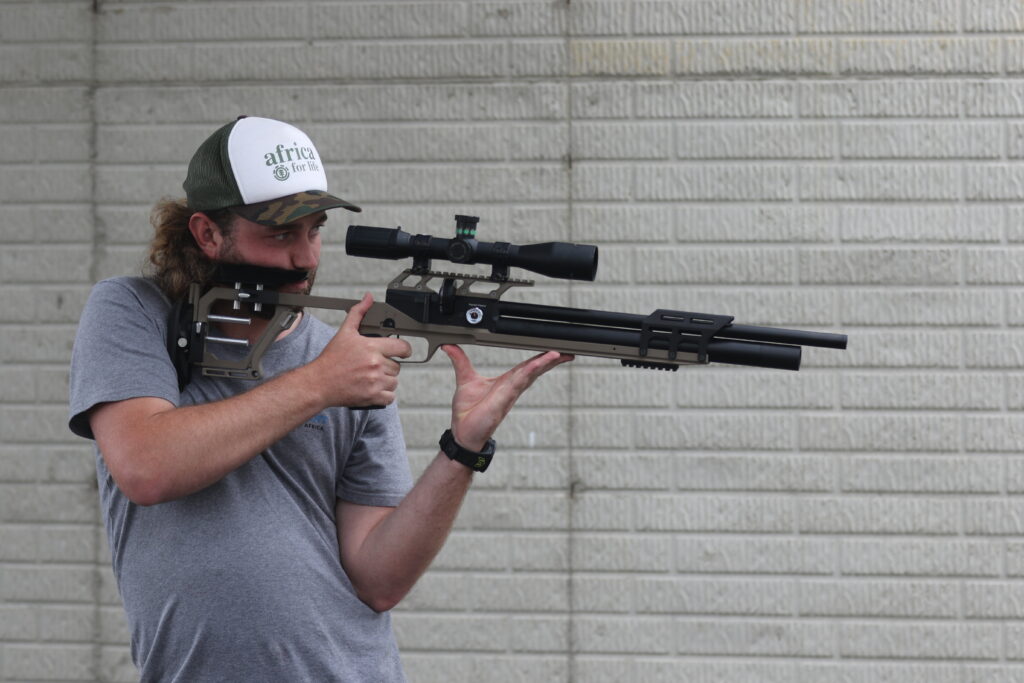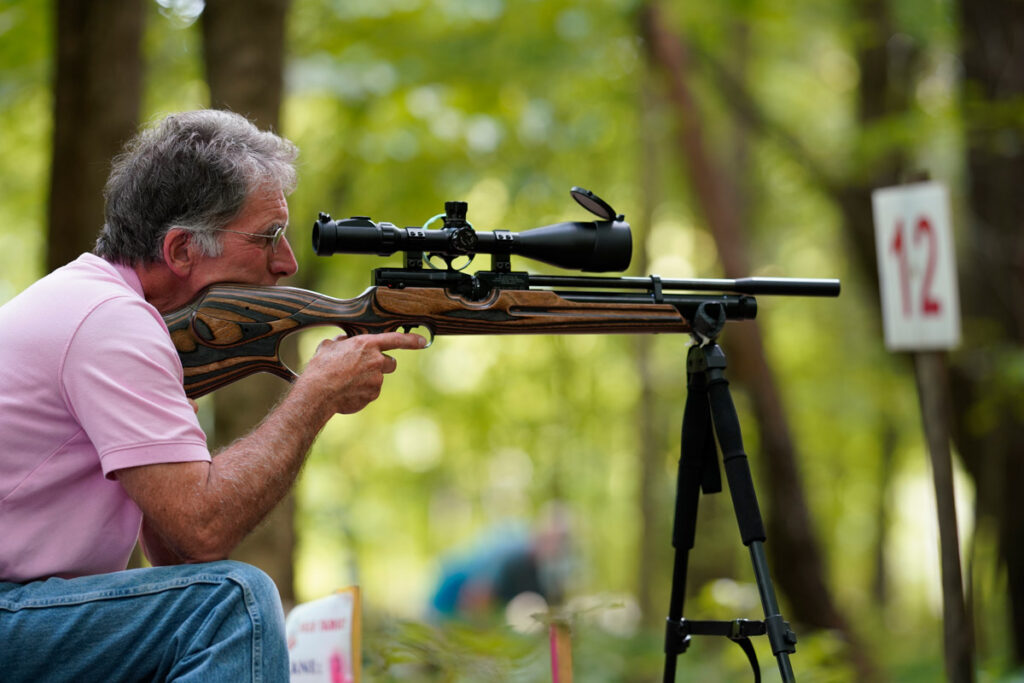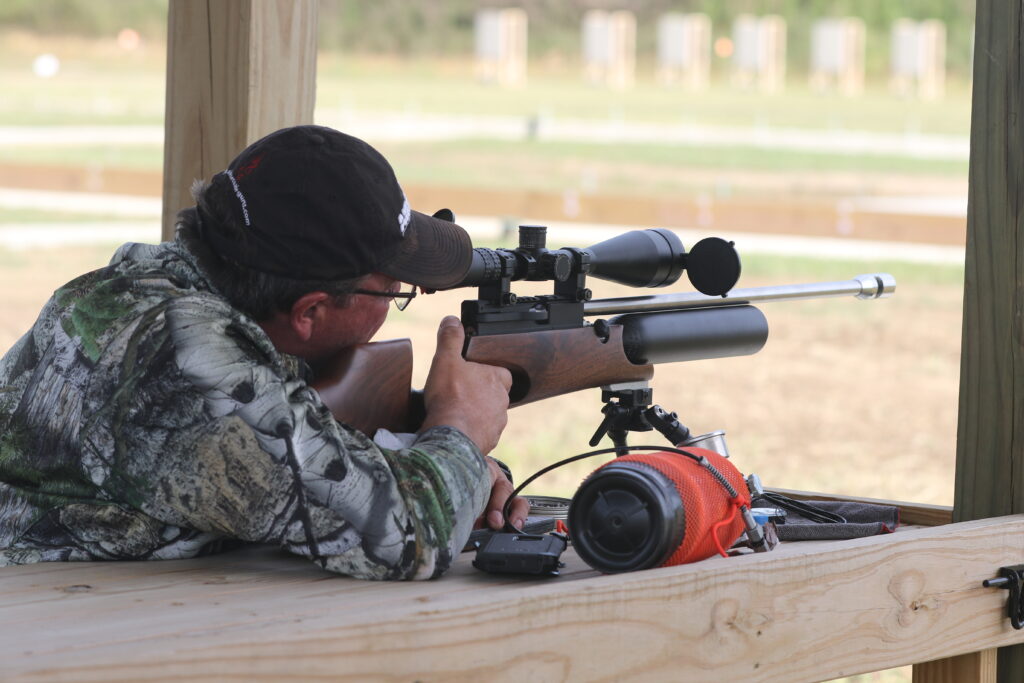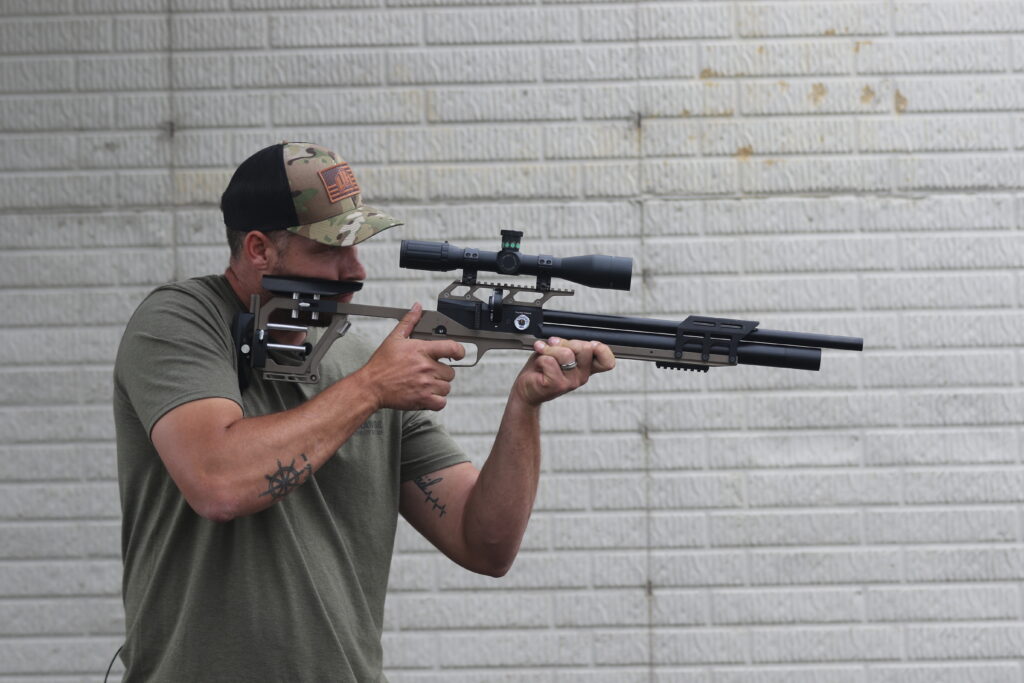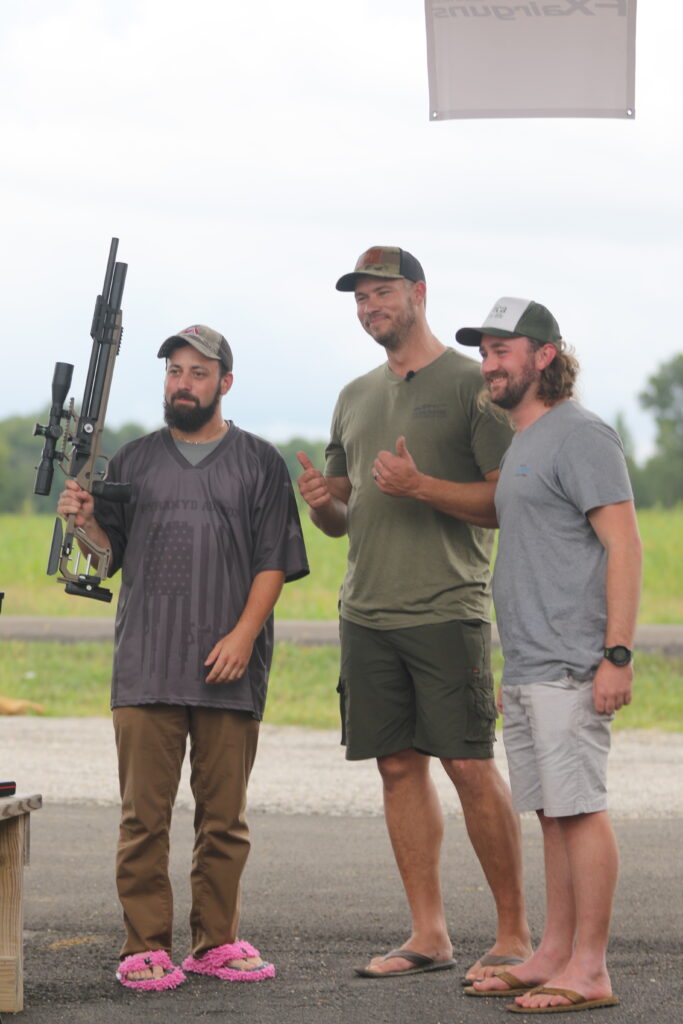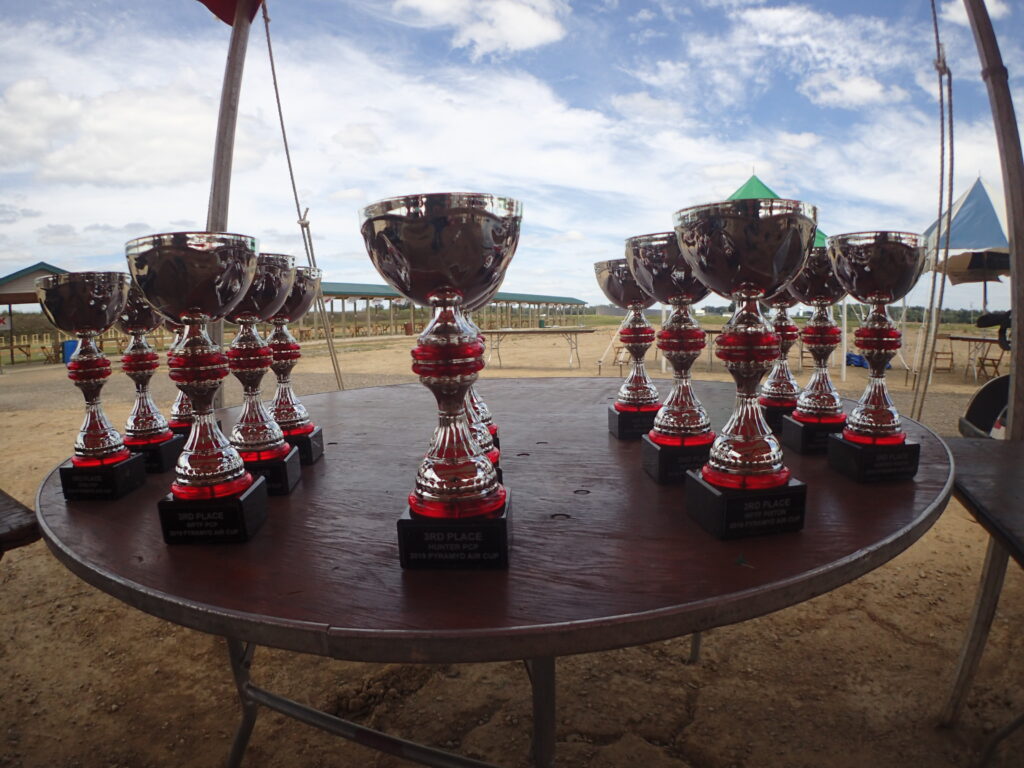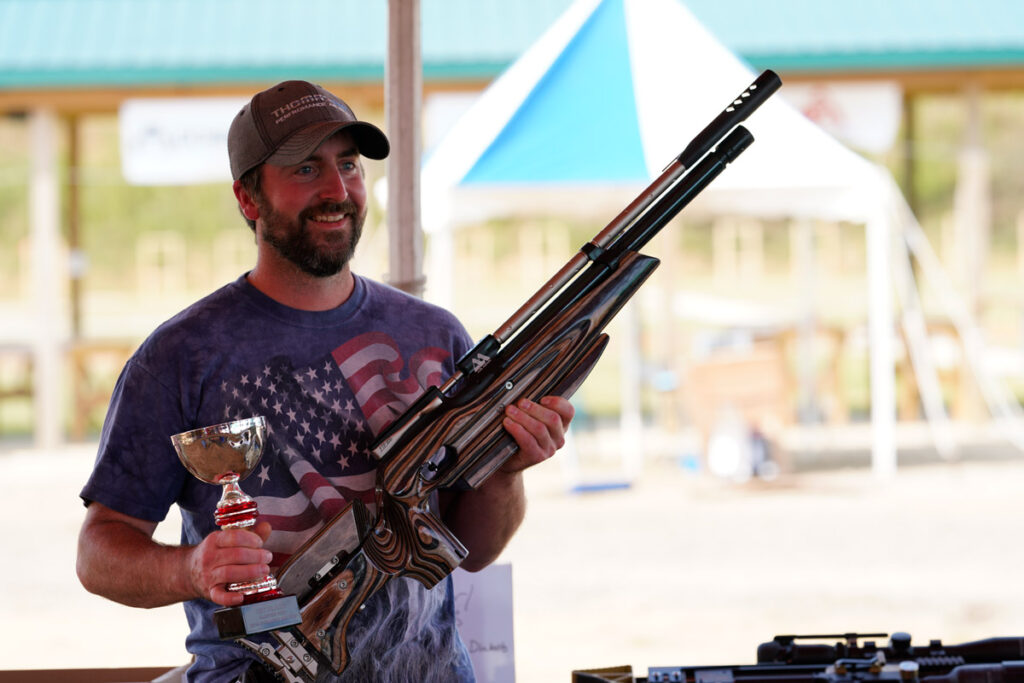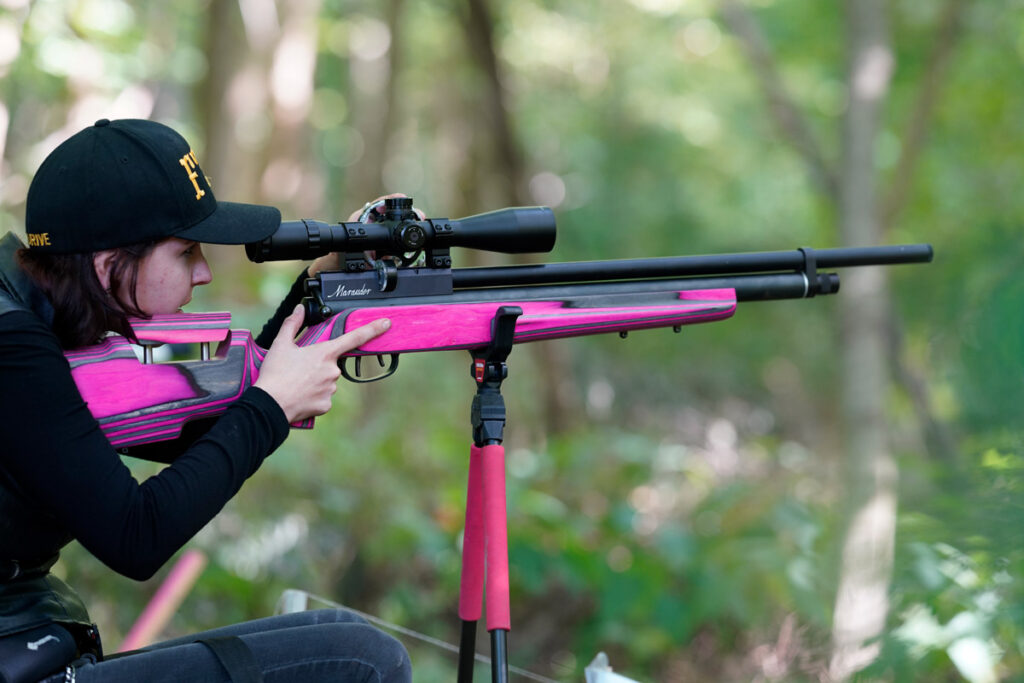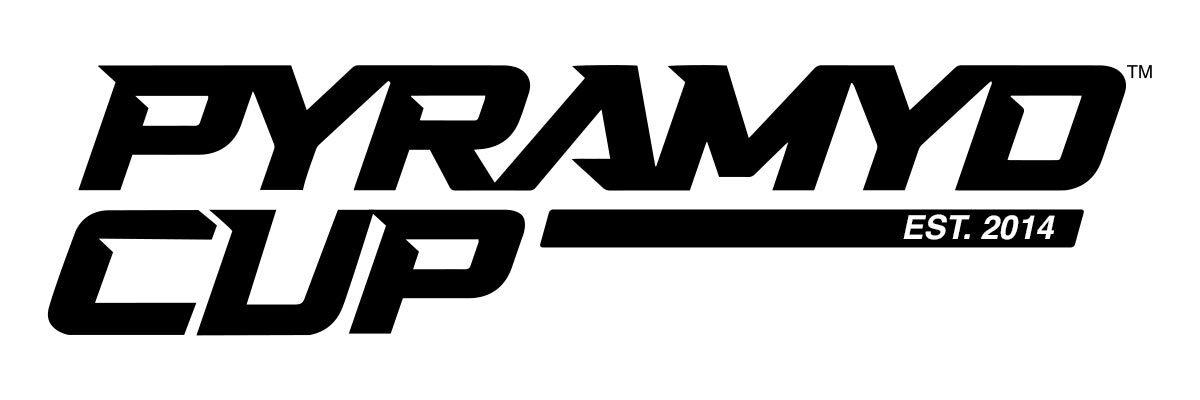The 2019 Pyramyd Air Cup has come and gone, and I’ve had a few days to reflect on the happenings of the event. For the 6th time, we have taken on the tall task of providing a fun filled weekend for airgunners from all around the country, and in a few instances, the world. This year saw the addition of the newly ASA sanctioned 100 yard Benchrest match, finally bringing a long range BR match to the east coast. This new event provided a lot of stress for us and also a lot of excitement, as the purse for the event was over $21,000! We have had the good fortune of learning from the west coast events in some areas, and talking with competitors in these events to try and put our best foot forward, and I believe we have done just that. Before I breakdown the action from the weekend, I would like to say a few THANK YOU’s to some very important folks.
First, Pyramyd Air Marketing Director Kristen Coss. For those that do not know, Kristen is the heart and soul of the Cup. She coordinates everything from signage, to food, to the banquet, to the sponsors and awards. Literally everything that happens before we are onsite, Kristen touches. This event does not happen without her and for that, I have to say thank you! Second, I want to thank all of the sponsors of the event. The manufacturers that have supported the event are countless and I cannot thank them enough for their continued support and partnership both for this event, and in our business. We are proud to work with all of you and are excited to see what the future holds. Third, I need to thank the folks at the Cardinal Shooting Center. This new venue has been nothing short of amazing and their partnership and assistance has allowed the event to grow in ways that we did not think was possible. Last, but certainly not least, I need to thank all of the competitors that attended the 2019 Cup. Whether this was your 6th year attending the event, or your first, whether you participated in all of the events or just one, we thank you for coming and giving it your all. And more importantly, we thank you for competing with positive attitudes and being helpful to your fellow competitors. This is one aspect of airgun competition that you simply do not find in other sports, the camaraderie, thoughtfulness and willingness to help another competitor even if it threatens your own stake in the competition is something that I’ve always been astounded by and proud to see. Now, onto the report. For this year, I will break the report down by event in an effort to make everything easier to digest for you readers.
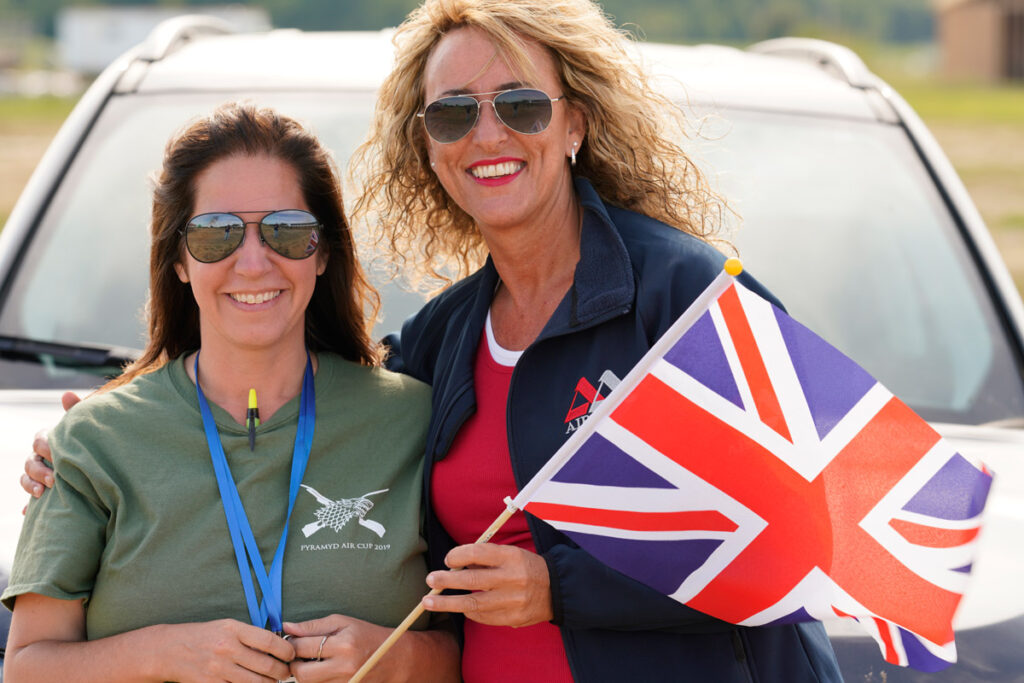
100 Yard Benchrest
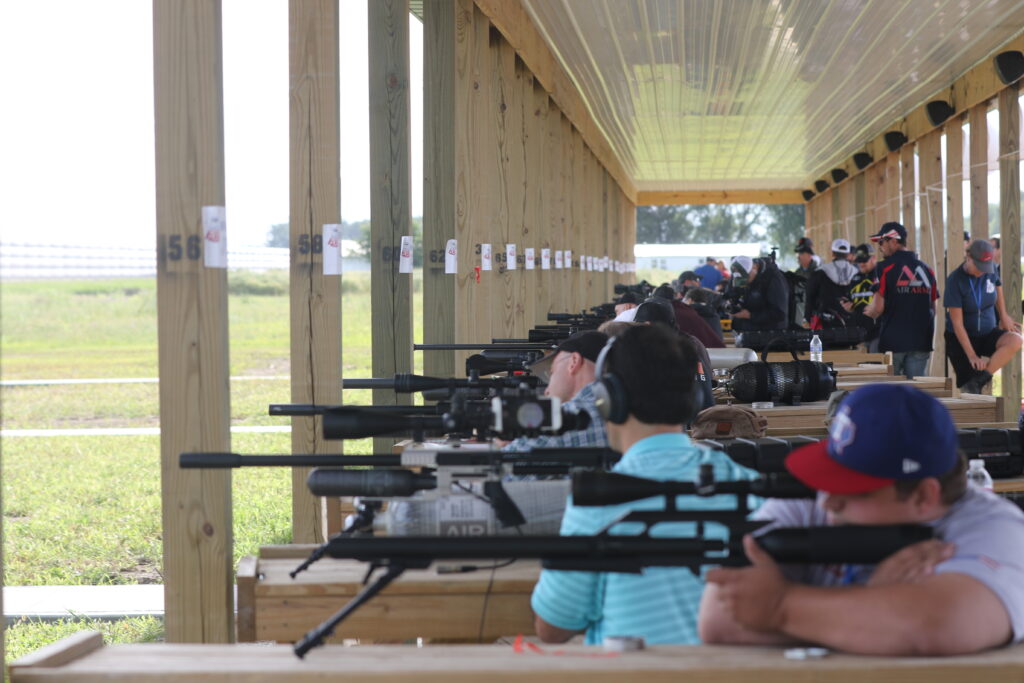
What many of you may not know is that the search for a new venue for the Pyramyd Air Cup has been happening for the last few years. But it was not until the very end of the 2018 Cup, that we came into contact with the Cardinal Shooting Center. Literally, the day after the 2018 Cup, Kristen and I drove to Cardinal and were astonished by all that the venue had to offer. You can see the trap fields and vast campgrounds from highway I-71. The newly built (and still under construction) rifle range features a covered 100 point range, about 15 pistol bays and a 50 meter range that is still under development. We finally had a venue that could handle a proper benchrest event and our Gunslynger event at the same time! And so it was to be, the 2019 PA Cup would feature the east coast’s first 100 yard Benchrest Match, no pressure!
I’ve known for a number of years, that if we hosted such an event, I wanted to do one thing differently than RMAC and EBR. I personally, do not care for the idea of a “Pro” and a “Sportsman” division. It’s a personal thing, but suffice it to say, I just don’t care for the separation of experienced and industry sponsored shooters from “the everyman.” If you want to come compete, put in your best effort and see how you compare to everyone in attendance. After putting this idea forward to Kristen, and Pyramyd Air President Val Gamerman, we decided that we wanted to also make sure that we provided awards for more shooters than just the top 3. So we decided to award from 1st on down to 10th place. The prize breakdown by place can be seen on the Cup website, but I will list it below when we get to the prize winners as well.
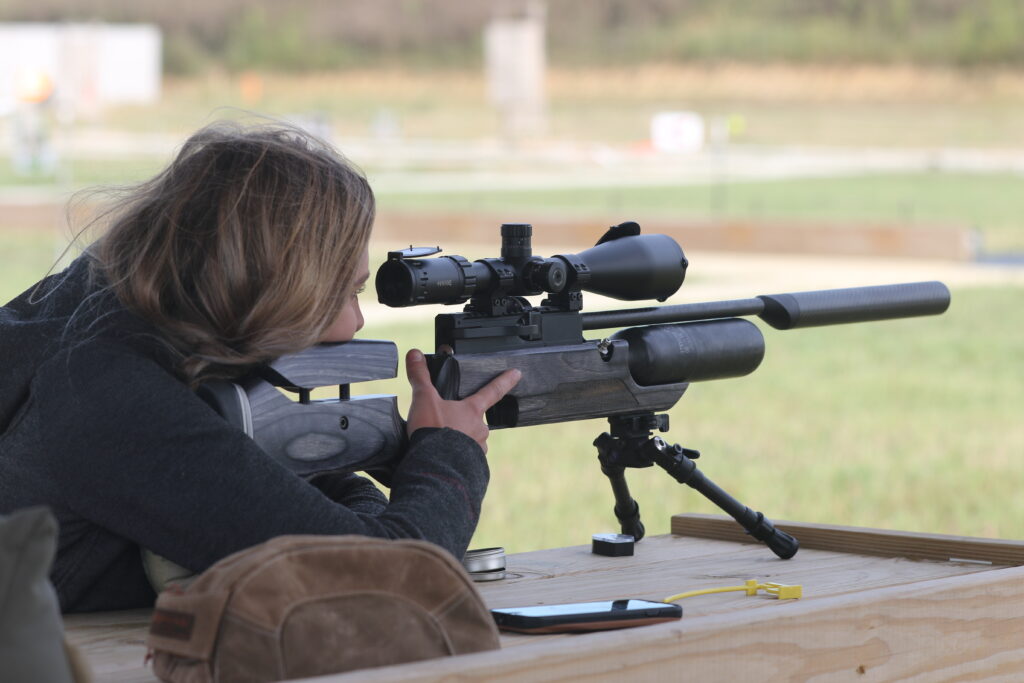
Another issue I knew from talking to organizers and shooters at previous events was there needed to be some way to verify crossfire. Crossfire is when a shooter from a nearby lane shoots your card. This can be an issue because you are only allowed 25 shots in the scoring area of your target, anything over that carries a -10 point penalty. So we needed a way to weed out those shots if/when they arise. A number of shooters I spoke with mentioned backer cards placed around a foot behind the actual target. This provides enough space to see the difference between the entry and exit points on each shot to determine if it came from straight on, or from an angle. So, I tapped friend and engineer Bill Rabbitt to devise a target stand that incorporated a backer card. He did just that, and we were in business. I must thank Bill for all of his work on this, as well as Mike Niksch (maker of Thomas Air Rifles) for their assistance and hard work to make the target stands on the Wednesday before the Cup. Also a special shout out to Jeff Paddock for his assistance in cutting all of the wood.
We had around 90 competitors signed up for the 100 yard BR, and while we could accommodate more, I am very pleased with the turnout and look forward to even more shooters in the coming years. We drew the bench assignments and groupings on Thursday, with all competitors set to shoot two cards (25 shots each, 50 scoring shots total) on Friday. Group A would shoot at 9am and 12pm, group B at 10am and 1pm and group C at 11am and 2pm. Shooters had 30 minutes to shoot 25 bulls and are allowed to take as many sighters as they wish during that time. With many past champions at other events in attendance like Alvaro Lopez, Shane Kellar, and Claudio Flores, the stage was set when Friday morning rolled around.
The wind proved to be very tricky as shooters took aim at their first cards of the day. Most shooters opted for the .30 caliber, with the overwhelming majority running FX rifles (52). Though we saw plenty of RAW’s (8), Air Arms (6), Daystate (8) and even some Marauders and Gauntlets (4) on the line. Top scores on the first cards in each group were, John Bagakis (group A) with a 222, Enrique Gomez (group B) with a 208, and Jon Tueller (group C) with a 213. While the first heat did not see any crossfire, the instances increased through the day, and the backercard concept proved to be a great method of determining crossfire. I am truly glad we went that route, and I believe a number of shooters were as well.
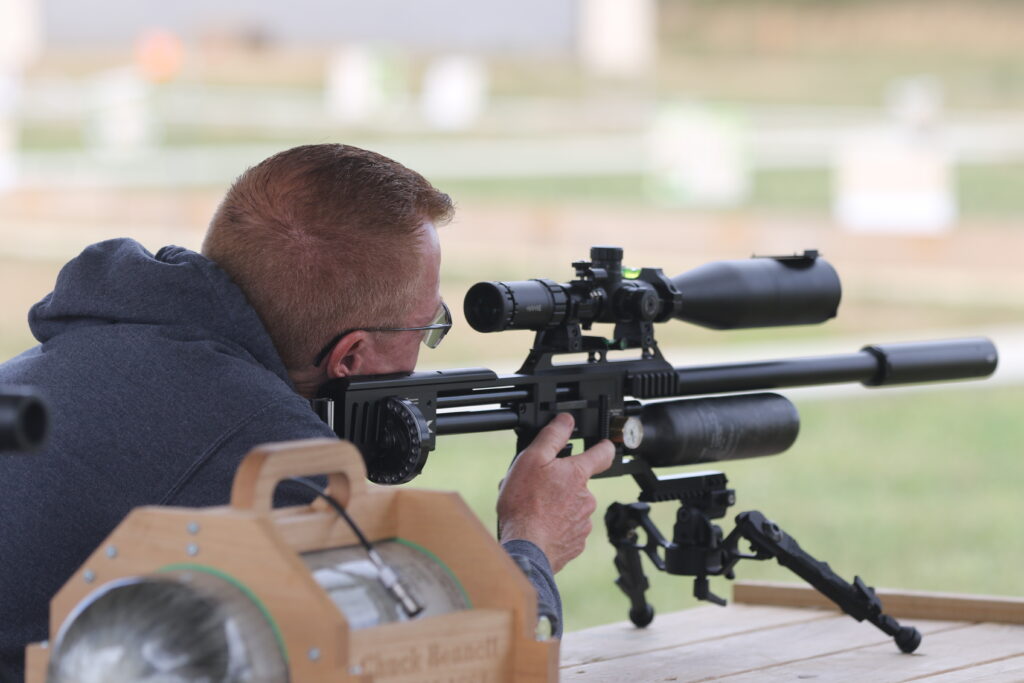
As we rolled into the second card, many shooters donned a more serious attitude, as this was the time to secure their place in the finals. The winds were still shifting, to the point that watching the wind flags may have done more harm than good. We definitely saw the more experienced shooters move ahead of those who were shooting this type of event for the first time. Looking at targets, you could almost tell how well a shooter would do just by looking at the sighter targets. The more they shot the sighters, the more likely they were to produce a higher score. Again in group A, John Bagakis was the man to beat with a 219 on his second card and a 441 overall. In group B, Bill Rabbitt produced a 220, which ended up being the highest score overall for the second card. In group C, Enrique Gomez held strong with a 210 to secure his place in the finals.
The finals were held the following day after the Field Target match concluded. 9 competitors from each group were selected to advance to the final and randomly assigned benches. 6 of the 27 finalists (I believe) were first time 100 yard BR shooters, which was great to see. But as you would expect, experience is very valuable in these types of competitions, and it showed. Just one of the top ten finishers was a first timer.
We held the final score announcement until the banquet that evening, and I am sad to say, I made a mistake. In an effort to help the scorers, I jumped in and began writing the final scores on our scoreboard and in doing so, I flipped two individuals scores. This impacted John Bagakis and Matt Dubber. At the banquet, John was announced in 8th place, with a score of 212, 2x and Matt was announced in 4th place with a 216, 4x. In reality, it was John that shot the 216 and Matt that shot the 212. They shot on benches 3 and 4, and I accidentally flipped their results when writing them in. I have since spoken with both shooters and apologized profusely for this error. Both are class acts and understood. Above all, this was my mistake, I own that and will make sure it does not happen again in the future.
The top 10 for BR looks like this:
- Justin Welch, 223 (5x) – $7,500
- Todd Blanchard, 217 (4x) – $5,000
- Ernest Rowe, 217 (2x) – $3,000
- John Bagakis, 216 (4x) – $1,500
- Ed Lenarduzzi, 215 (2x) – $1,000
- John Tueller, 214 (1x) – $900
- Abby Casey, 213 (2x) – $800
- Matt Dubber, 212 (2x) – $700
- Shane Kellar, 211 (3x) – $600
- Bill Rabbitt, 210 (2x) – $500
Congrats to all of the top finishers, all of the finalists and all of the competitors. And to the inaugural 100 yard Benchrest Champion, Justin Welch, well done! Your score was absolutely amazing and you deserve all of the praise in the world for your performance.
For complete Benchrest Results, click here
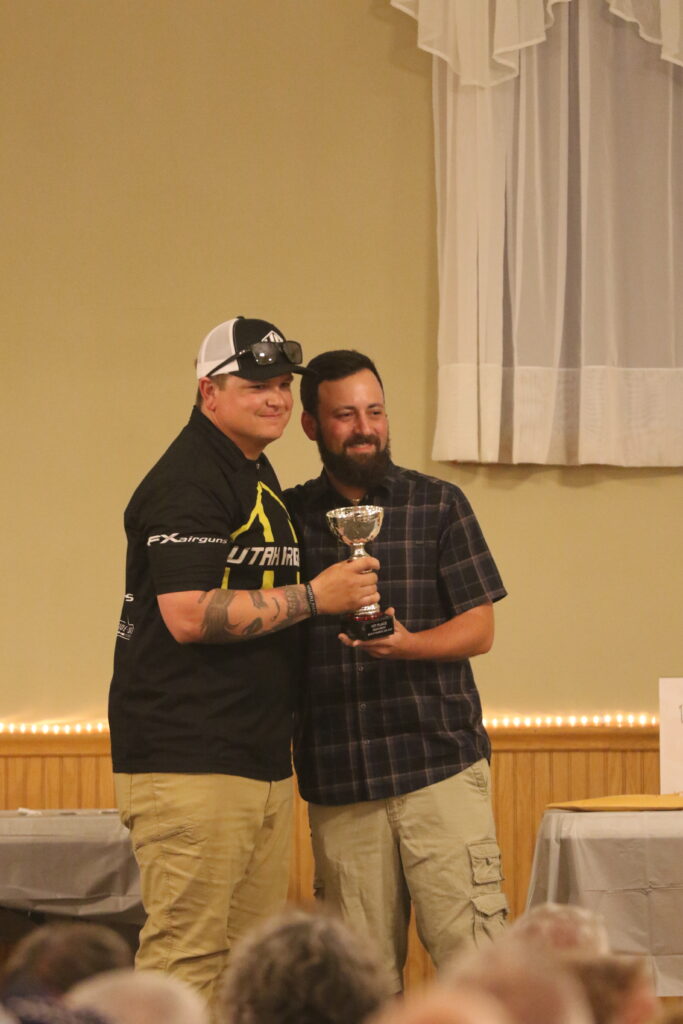
Gunslynger
The gunslynger is our head to head, speed silhouette event. It’s a March Madness style bracket challenge but instead of your favorite school, insert your favorite airgunner! We host a PCP division and a Springer division. This year, we wanted to find a way to make this event run faster than it had in the past, and we decided a new target system was needed to make that happen. Enter the fine folks at RX Target Systems! David at RX and I bounced back and forth on this over the course of a few months until he believed he had the target locked down. Traditionally, the silhouettes used for the Slynger have been 1/10th scale silhouettes, but on the new targets, they came out closer to 1/5th scale. We figured shooters would not complain about having larger targets than normal, and it would lead to some faster times than ever before.
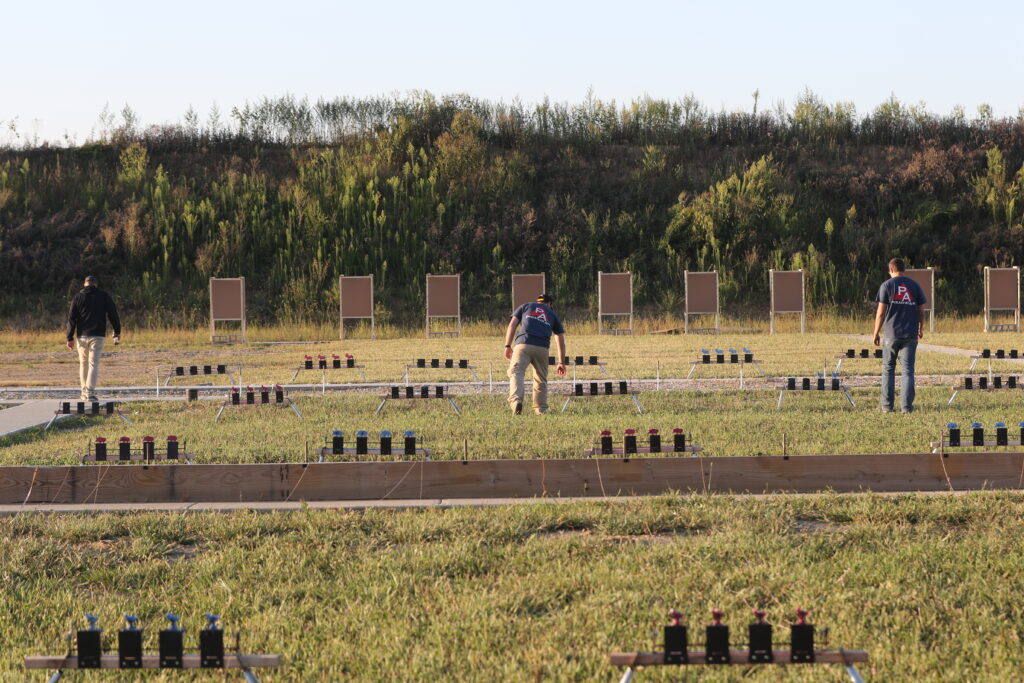
We started with the Springer division, and immediately, we knew who our favorites would be. Nic Gregoris sped through his first few rounds with ease. Nic has been shooting Gunslynger at the Cup for many years and knows his Beeman R10 inside and out. First time Cup attendee, Shane Kellar ran his HW35 quite well, establishing himself as a contender in the early rounds. On the other half of the draw, John Bagakis (fresh off a great day of Benchrest) had his Diana 48 singing the right tune, as he breezed into the semi-finals without much of a hiccup. And Dan Putz ran his Walther LGV consistently to set the stakes for the semi-finals.
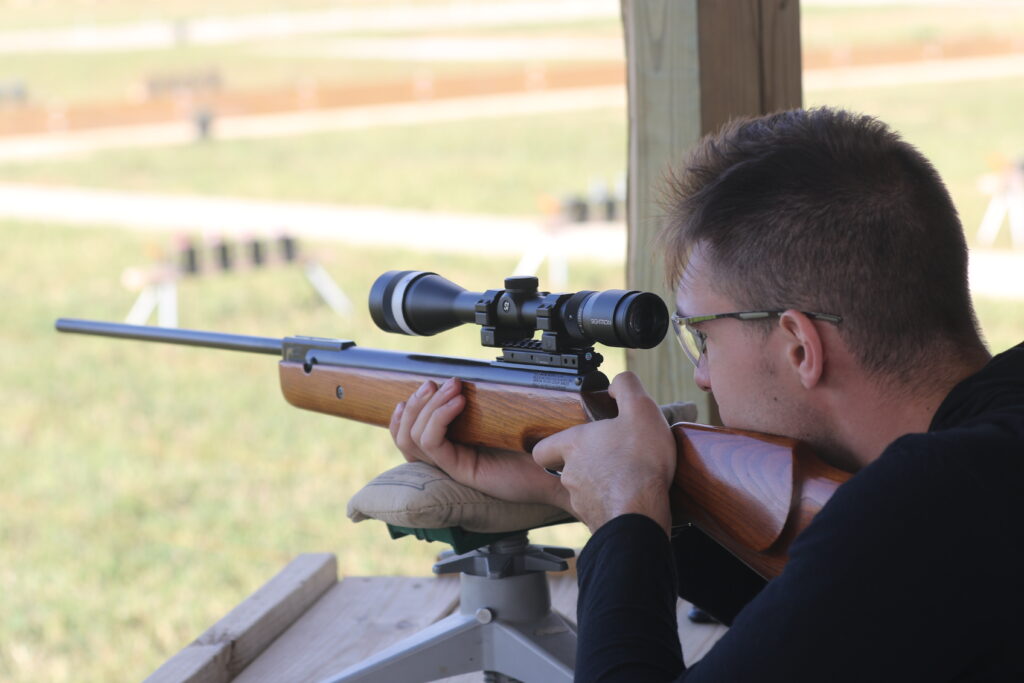
In semi-final number one, Nic moved quickly and efficiently through the targets taking it to Shane. The winds were still moving around quite a bit and I believe that took a toll on Shane and his relatively low powered HW35. Even with the bigger targets, the winds were so formidable that they did not seem to make much of a difference. Nic won the match to move to the finals with a chance for the $1000 grand prize. In the other semi-final, John Bagakis had some early struggles with his scope zero that allowed Dan Putz to take a lead he would not relinquish.
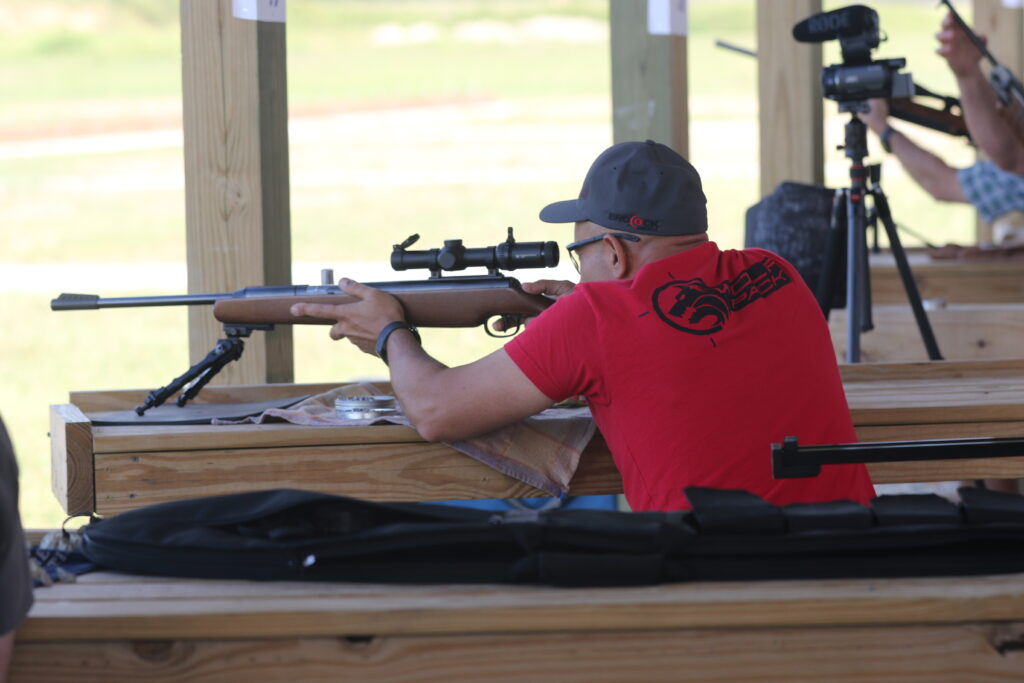
John and Shane squared off in the 3rd place match for the $250 prize. John and his side-lever Diana 48 seemed to be back on point as he was able to overtake Shane to claim 3rd place. In the final, Nic and Dan gave it all they had (as I am sure their arms were tired), with Nic eventually coming up victorious. Congrats Nic, you certainly earned the win and had a fantastic showing. Put that $1,000 prize to good use!
On the PCP side, this seemed to be the year of the Side-Shot magazine. Many FX shooters opted for the side-shot mags rather than single loading like we have seen traditionally. It would become a clash of styles. Former Gunslynger PCP Champ Bill Rabbitt, cruised through his opening rounds, as did Greg Sauve. We also saw Matt Dubber and Val Simmons make super fast work of their early round opponents thanks to a very clever pump action kit for the FX Impact. The “Clack, clack” of the pump action is a noise that will likely haunt a few shooters dreams for the next year. This cool upgrade comes from Saber Tactical, and certainly caught the eyes of all in attendance.
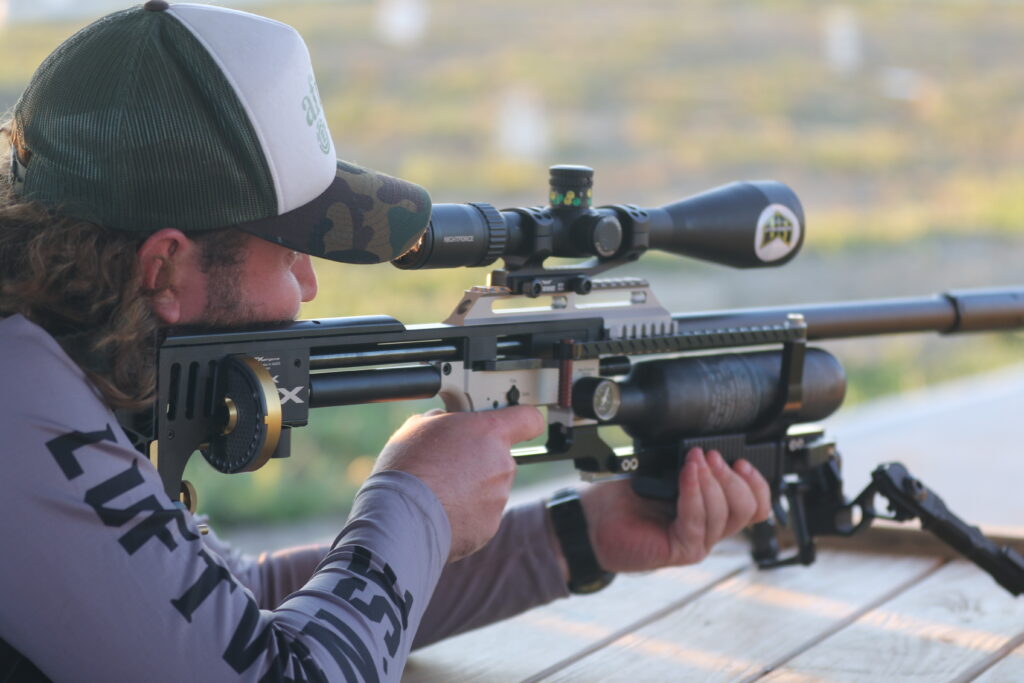
On a side note, one of the things I really get a kick out of about the Gunslynger is the innovation. Shooters watch what each other are doing, and when something works, it catches on as you see other shooters doing the same thing the following year. I believe this innovation drives our industry forward (particularly the aftermarket side) and helps catch the eye of new shooters. There are some who believe these innovations are not in the spirit of the competition and seek to limit them. This type of exclusionary thinking not only limits innovation, but creates an adversarial relationship between creative shooters and match directors. As a match director, I am always concerned about maintaining fairness without limiting this innovation. But to me, speed focused competitions like the Gunslynger help move our industry forward and showcase a side of airgunning that most folks will never see and I LOVE IT!
Back to the competition! Bill Rabbitt ran into Austin James (co-owner of Utah Airguns) in the round of 16, and even with Austin loading the magazine at the beginning of the match, Bill was unable to hold off the speed of the pump action Impact. The speed of the pump action combined with the capacity of the side-shot magazines was clearly very difficult for most single loaders to contend with. In the following round, Austin went up against fellow Utah Airguns owner Justin Jacobson. Both running the pump action kit, it was a sight to behold. Interestingly enough, both missed a few targets, requiring an untimely reload which ended up costing Austin the match, and Justin took him out with one target remaining. It was a nail biter and the crowd cheered when the final target went down.
Justin would square off against Matt Dubber in one semi-final, and Greg Sauve has a showdown with Val Simmons in the other. Greg was the final single loader left in the competition and many of the shooters in the crowd were squarely behind the underdog to take out one of the pump action shooters. Sadly, Greg was not quite up to the task as Val sped past him. In the other semi, Matt showed his speed taking out Justin, sending Justin to the third place match against Greg. As the sun lowered in the sky, Greg and Justin squared off and to everyones surprise, Greg was able to maintain a consistent pace and take Justin out to claim the $250, 3rd place prize. He was rewarded with a nice cheer from the crowd. The final, was easily the fastest I have ever seen. I believe it only took about 35-38 seconds for Matt to load, pump and knock over all 16 silhouettes and claim the $1,000 grand prize. The pump action is certainly a force to be reckoned with in the speed shooting world, and I suspect we will hear even more from it in the coming years.
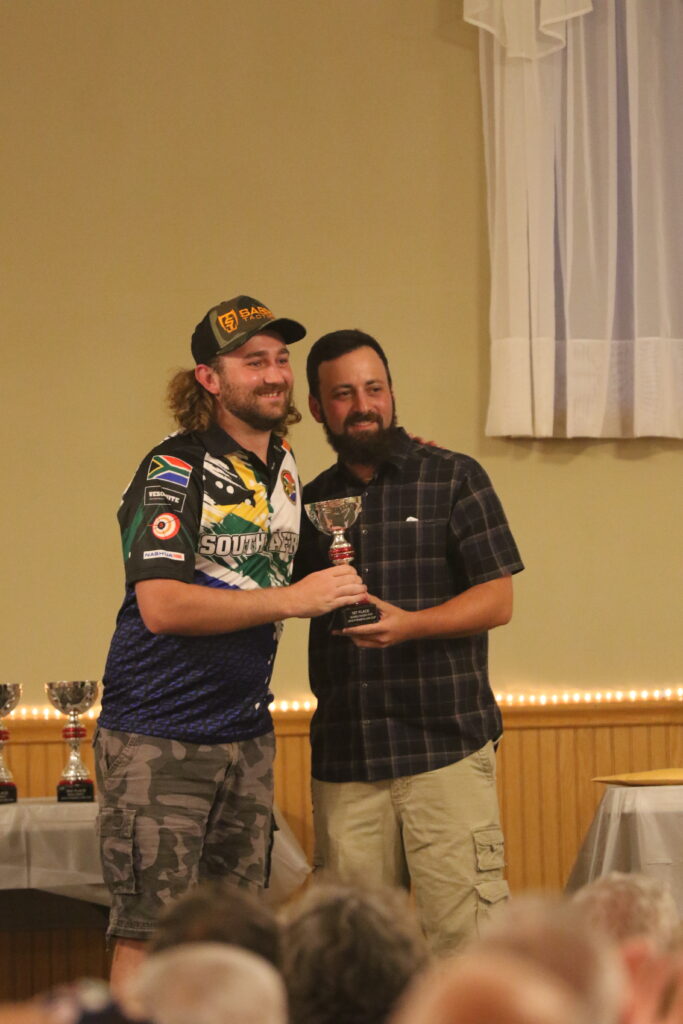
I said it in the shooters meeting, and I will say it again here. The reason we pursued the quick reset targets with RX Target Systems was to allow for more Gunslynger draws in the future. The intent is to open things up to a magazine fed division for PCPs next year and change the current PCP division to single load only. Hopefully we can make that a reality. I also want to thank David at RX for his dedication and hard work to make this project come to life. The targets worked very well, and I suspect we may see these catch on at other competitions.
Spring Piston Gunslynger Results:
- Nic Gregoris – $1,000
- Dan Putz – $500
- John Bagakis – $250
PCP Gunslynger Results:
- Matt Dubber – $1,000
- Val Simmons – $500
- Greg Sauve – $250
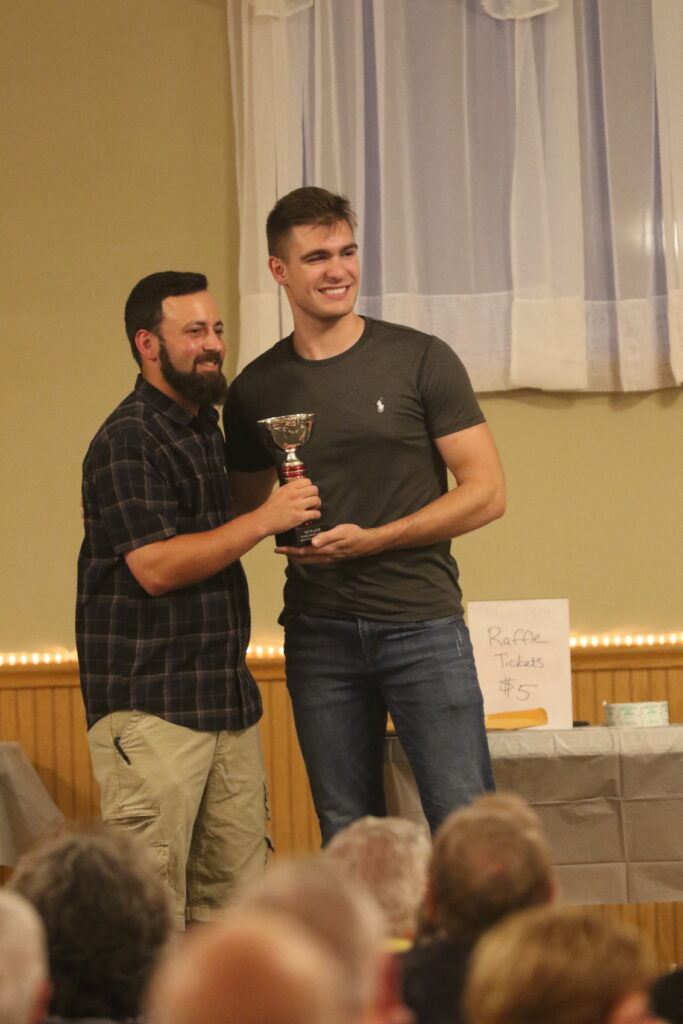
Field Target
We were very fortunate this year to use Cardinal’s 3D Archery course for the field target portion of the Cup. This was a big change from years past, as 27 of the 30 lanes were now deep in the woods instead of a big open field. This made course design more difficult but proved to be worth it based upon the shooter feedback. The woods were dark, and relatively thick meaning there was a lot of brush clearing that needed to be done leading up to the match. Thanks to the help of one or two PA employees we were able to get the woods to a point I was happy with and create a challenging and interesting course.
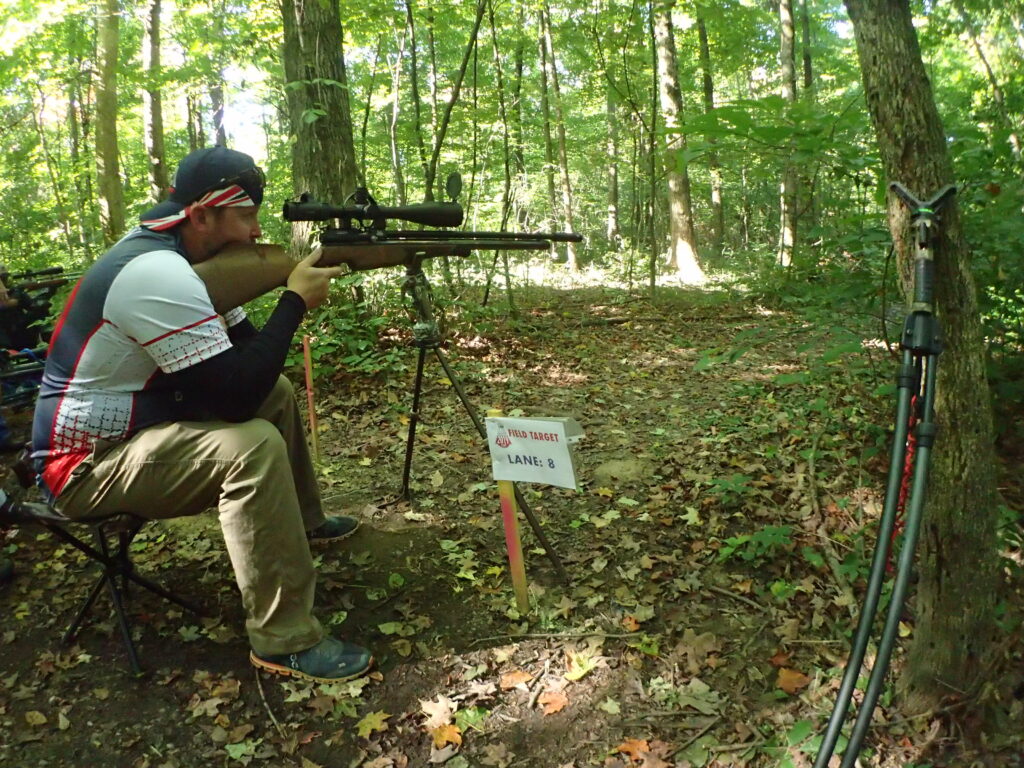
There were a number of lanes where targets were not straight ahead of you, but to your left and right. So much so that you needed to move between shots. We also had a number of targets that crossed over other lanes, changing the angle of the wind between the first and second shot. This made the course quite different from others you will find in the U.S. and was very thought provoking for shooters.
We had a yellow course, and a white course and as the names suggest, the targets were painted either white or yellow. This was done to make finding targets easier in the dark woods, and hopefully reduce complaints from shooters trying to find targets through the scope, and reduce target acquisition time. The yellow course featured 10 targets over 40 yards, with an average target distance of 33.9 yards. The troyer difficulty rating before lighting, wind or any other factors were added was 31.5T. The white course had 13 targets over 40 yards, with an average distance of 34.9 yards. The troyer before adding any factors was a 32.7T and I believe most shooters will tell you that the white course was more difficult to shoot.
We had some very accomplished shooters at the Cup this year both from the USA and a few from abroad. Air Arms was kind enough to bring over two time World Field Target Champion Jack Harris, who just finished second at the 2019 WFTC in England. And John Farbrother, 2018 World Field Target Champion in the Springer division. Both are great guys and even better shooters. I knew they would set a very high bar for other competitors, and I welcome that. Aside from those two, US National champions (former and reigning) filled the course with the likes of Ken Hughes, Bill Rabbitt, Dennis Himes, Eric Brewer, Dan Putz, Hector Medina Gomez in attendance. We also had two former World Champions from the USA in attendance with Jeff Paddock (2007 WFTC Piston Champ) and Greg Sauve (multi-time Veteran WFTC PCP Champ) challenging for top placing.
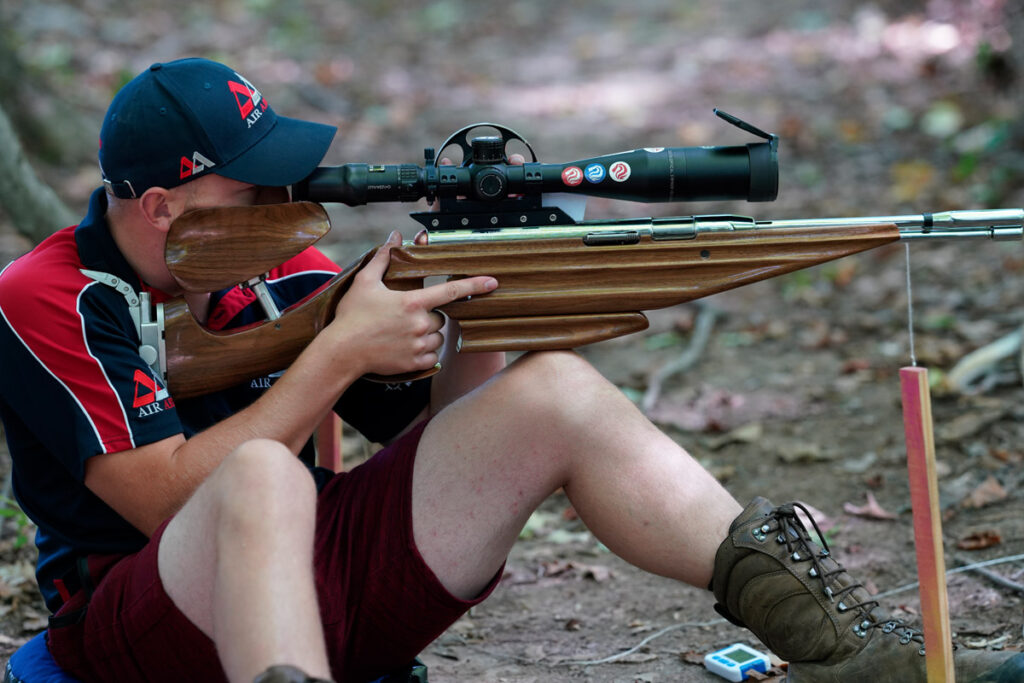
The first day did not feature a whole lot of wind inside of the woods, but on the three lanes on the archery sight in range, there was a decent bit of wind to keep shooters on their toes. As scores came in, most of the top contenders had performed quite well. In Hunter PCP, Bill Rabbitt continued his strong season, posting a day 1 high score of 58/60. Followed closely by Dennis Himes on 57. In Hunter Piston, Greg Shirhall led the way with a 41. Dan Putz and Eric Brewer were close behind on 40 and 39 respectively. In WFTF PCP, Welshman Jack Harris turned in a 57, but close on his heels were David Slade (56) and a slew of others on 55. Open PCP was very tight as well with Gary Palinkas leading with a 51. He was trailed by Keith Walters (50) and Paul Porch (49). And in WFTF Piston, Englishman John Farbrother smashed the course (and his competition) posting a 54, leading his closest competitor, Ray Apelles, by 6 shots.
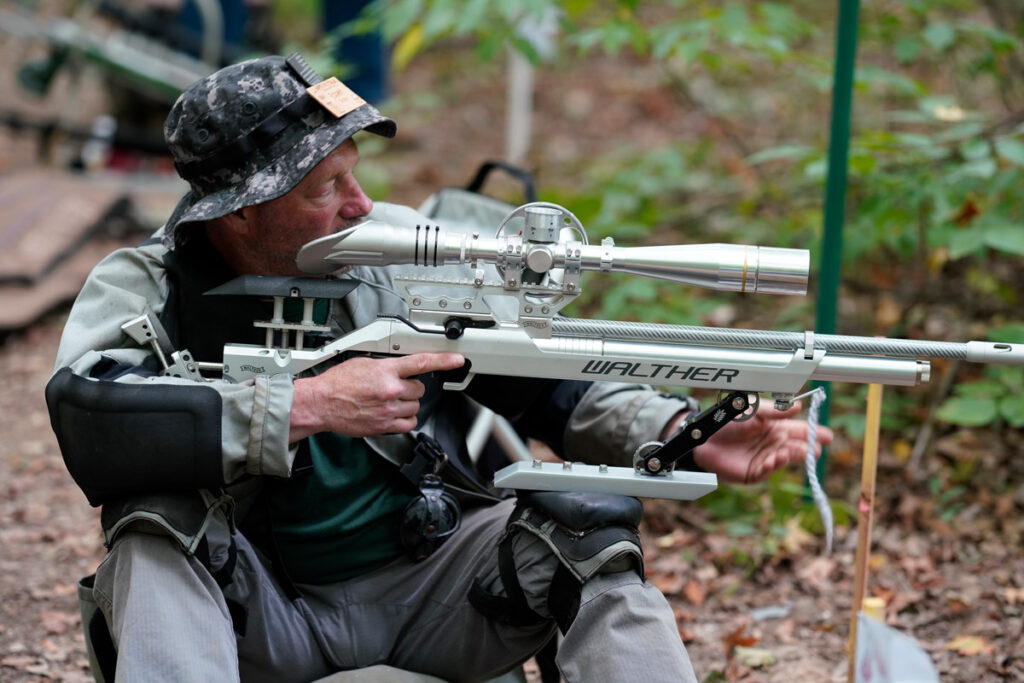
Day two rolled in with a more serious tone on the air (as it usually has) as shooters rolled up their sleeves and went to work in an effort to earn top placement in their classes. A few cold lines for minor things (shot strings, snagged lines, etc.), but no major stoppages or failures. Everyone seemed to be enjoying themselves despite knowing everything was up for grabs. Stopping to chat with Jack Harris, I knew he was kicking himself for not clearing the course the day before. I also knew he was clear through the halfway point of the course, and I saw no reason he shouldn’t continue with that for the remainder. As scores were turned in, he handed me a perfect card (60/60) and all I could do was smile. Jack is an incredible shooter, and I knew he would humble at least one of my courses. I’ve never had a course of mine cleared, so that was a first for me, and the Cup. And I am glad it took a shooter of Jack’s caliber to do it! Suffice it to say that Jack’s clear put him atop the WFTF PCP division. In WFTF Piston, John Farbrother continued his success from the first day, posting another 54 to take top honors in the division. In Open PCP, Gary Palinkas, Paul Porch and Manolo Gonzalez all posted 54’s, securing the top three spots (in that order). In Hunter Piston, Dan Putz shot an insane 53 to put breathing room between himself and his competition and take the crown. And in Hunter PCP, Bill Rabbitt managed to remain strong with a 55 to secure his place atop the division. I should also mention there was a three way tie for 3rd place in Hunter PCP which was decided by a shoot-off. Greg Vaughn, Jim Cyran and Jeff Little squared off on a 1.5” killzone placed around 50 yards away. After all three missed, Jim and Greg managed to connect on the second shot and Jeff could not match. With just two shooters remaining, Jim was able to take the target down a second time, which Greg was unable to achieve, placing Jim in 3rd place.
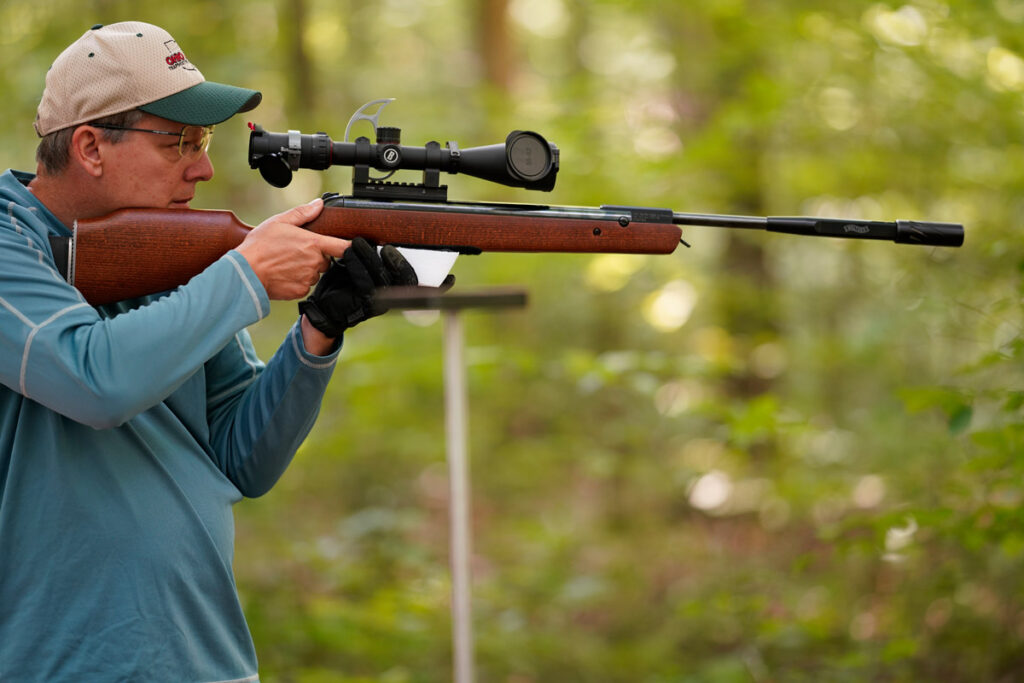
As always, the top finishers in each division (1st – 3rd) select numbers from a hat to determine prize picking order. We had some fantastic prizes including an Air Arms FTP900, and FX Impact fully kitted out with Saber Tactical and Side-Shot gear, an HW110 Bullpup, Hawke Sidewinder ED scope, two FX Dreamlines, Air Venturi Nomad II, Ataman BP17, Hatsan Hercules Bully and a slew of others. As the fates would have it, Dan Putz drew number one among the first place finishers, and he took the FX Impact donated by the Saber Tactical guys. Bill Rabbitt took home the FTP 900, Jack Harris won the Ataman BP17, John Farbrother took an FX Dreamline, and Gary Palinkas selected the other FX Dreamline.
Overall scores can be seen by clicking here
Thank you again to all that attended the Cup. We promised that 2019 would be bigger, better and more excellent than the five that came before it, and I believe we have achieved that. But we still have work to do to make it even better, and I can assure you we will be working towards that in 2020. I do also want to give a specific thank you to all that entered (even if you didn’t end up making it) for the Field Target event. We were at a full 120 shooters very quickly this year, and it’s clear that the Cup is a must attend FT match for many, and I truly appreciate that. As the Cup grows and evolves, I know that FT is where the Cup got its start and to have the amount of support we do is truly humbling and awe striking. Thank you all for making this event what it is, and we look forward to seeing you next year. For those reading this, kicking themselves that they did not attend… I suggest you get your entries in earlier next year because you really need to be there. It’s a great time, filled with great people doing what we all love, shooting airguns.
Tyler Patner
